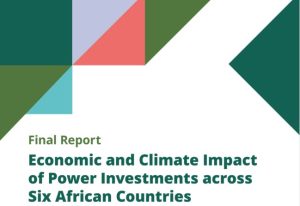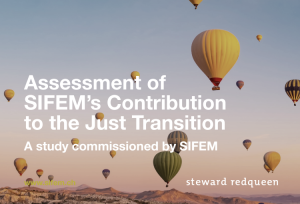Conversation Series: Sustainable Investing in the United States with Maulik Doshi
Chicago, the windy city, hosted one of the largest gatherings of investors navigating through the stirring winds of responsible investing. Are these tailwinds, or are responsible investors in the US still facing political and reputational headwinds as they go to market with their strategies?
Last month, our colleagues Maulik Doshi (Managing Director SRQ USA) and Willem Vosmer (Partner) attended the USSIF (United States Sustainable Investment Forum) conference in Chicago to build relationships and develop a better understanding of responsible investing the US markets. In this conversation series, Maulik talks with our colleague Gretchen Bruening (Consultant) about his experience at the conference and his views on the US market. What are the trends in the US market, and how did the conference reflect the public and private sectors’ views on sustainability?
Gretchen Bruening: What types of investors were present at the conference and what were their views on sustainable strategies?
Maulik Doshi: The conference hosted quite a variety of investors from global asset managers to boutique single-strategy funds. The attendees also ranged from large institutional asset owners to sophisticated wealth managers with a strong responsibility investing mindset. By and large, they are all very active across the public and private investment markets – but nearly all are seeking responsible outcomes alongside outsized market returns. Their views for the US market are generally optimistic for increased asset allocation towards these strategies over time, despite the recent pullback in allocations given the political headwinds.
GB: What were your key takeaways from this year’s USSIF conference? How do they reflect on your views of how the US market is thinking of sustainability and impact?
MD: Feelings in the US market around ESG and sustainable investing are constantly changing – the current backlash in the US reflects some valid concerns about greenwashing and the lack of adequate and accurate metrics regarding investment outcomes related to ESG. That said, there is more demand than ever for products and solutions that take into account sustainability factors as part of an investment thesis. This is certainly being driven by young US retail investors seeking great investment returns alongside their goals of investing responsibly.
GB: How do policymakers view this market change led by the private sector, and how do they aim to promote more responsible investment strategies?
MD: We heard from a number of policymakers at the USSIF conference, and the messages were quite clear – responsible investing is here to stay, and the government should support these strategies through appropriate incentives. The use of the IRA (Inflation Reduction Act) has been a great source of capital to accelerate impact-focused community investment, major infrastructure initiatives and, most importantly, climate transition innovation solutions. This type of support will clearly help the US establish better infrastructure and resiliency in the long-run, and the government’s role in this is critical. However, we observe more resistance to regulatory compliance (e.g. Scope 3 emissions reporting), as enforcing these themes is less urgent and more expensive in the view of many legislators.
GB: You moderated a panel discussion during the conference – what was it about and what were some key takeaways?
MD: The panel was focused on the challenges in corporate governance and engagement that investors face in the context of responsible investing. As investors manage portfolios of assets through a responsible investment lens, shareholder engagement is a key area of focus especially in light of the backlash against ESG strategies in the US market. Some activist investors have taken to divestment from certain names if they don’t fall within the parameters of their responsibility strategy. Divestment is a tool to be used in managing shareholder activism, but typically there is quite a bit of “engagement” with corporate leadership before divestment becomes the only option available. The use of data and technology are also becoming critical to better managing these conversations – this was another area of focus on the panel.
GB: What was a unique aspect of the conference that you enjoyed?
MD: USSIF participates in community engagement activities with the support of their membership. The team there had arranged for a tour of a community development program in Southside Chicago. This program supported the creation of a sustainable, accessible, and safe gathering space for locals as they seek to improve outcomes for underprivileged neighborhoods. It was great to see how youth were being engaged in these communities to improve wellness, nutrition, and independence in areas where opportunities are often limited. Kudos to USSIF and their membership for supporting such outcomes!


















